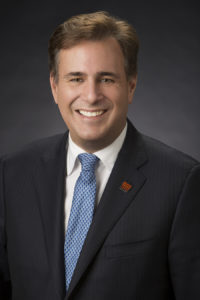- Town Hall Drug Shortages
- 3:30-5 p.m. Sunday
- South Esplanade, Room 151
At a time when the U.S. is facing an opioid epidemic, it’s baffling to consider that a shortage of injectable opioids and local anesthetics is one of the most urgent challenges facing ASA members today. In fact, due to a severe shortage of critical medications, ASA has aggressively engaged the FDA, DEA, Congress, manufacturers, and other medical specialties and health care stakeholders to mitigate shortages, while providing members with necessary resources.
Three of the country’s top authorities will lead the Sunday session “Town Hall Drug Shortages” to address the current status of the shortage, how stakeholders are working with agencies to solve the shortage and to provide a forum for members to share questions, concerns and ideas for improvement.

James D. Grant, M.D., M.B.A., FASA, is among the panelists addressing the shortage of injectable opioids and local anesthetics.
Panelists include ASA President James D. Grant, M.D., M.B.A., FASA, Chair of the Department of Anesthesiology at Beaumont Hospital-Royal Oak in Michigan, Ruth Landau, M.D., Professor of Anesthesiology at New York’s Columbia University Medical Center, and Ed Mariano, M.D., Professor of Anesthesiology at Stanford School of Medicine, Palo Alto, California.
“A national drug shortage crisis is potentially affecting the care received every day for thousands of patients undergoing anesthesia,” said Dr. Grant. “In an informal ASA member survey, more than 98 percent of respondents said they regularly experience drug shortages at their institutions, and more than 95 percent of respondents said the shortages impact the way they treat their patients.”
Reasons for the shortages vary. However, it has been linked to pharmaceutical company consolidation; a vulnerable supply chain, including production limits from the DEA; single-manufacturer restrictions on key supplies of these drugs; lack of backup production; and reliance on a production facility in Puerto Rico that was damaged during Hurricane Maria in 2017.
Drug shortages have occurred before. However, the current shortage appears to be one of the most significant, Dr. Grant said. The crisis has become one of ASA’s top priorities.
ASA has spent countless hours working with legislators and federal agencies to develop solutions.
“We’ve been told by some policymakers that they could use more information and detail about how this is affecting our specialty and the way we care for our patients. The survey gives real-life details to how these shortages are affecting our patients, as well as the concerns our patients have about their recovery and postoperative pain,” Dr. Grant said.
The top five drugs listed in short supply were pain relief medications, including hydromorphone (Dilaudid), fentanyl and morphine, bupivacaine, and epinephrine. In some cases, anesthesiologists have to rely on older drugs, switch to slower-acting oral pain medications or end their pain service. All options have impacted patient care and satisfaction.
ASA’s work with key policymakers and stakeholders, federal agencies and Congress has focused on increasing awareness of the crisis and partnerships in developing short and long-term solutions.
Return to Archive Index